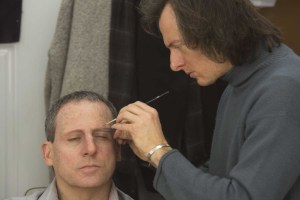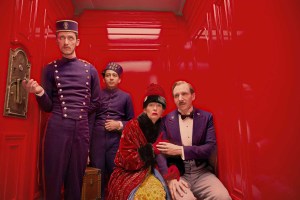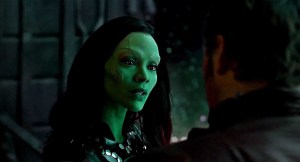
The three films that were nominated on Jan. 15 for an Oscar by the makeup branch membership of the Academy of Motion Picture Arts and Sciences represent a healthy diversity in not only the types of films being considered, but also in their different approaches to makeup and hairstyling artistry.
Nominated by the Academy’s makeup branch, first off, were makeup department head Bill Corso and key makeup artist Dennis Liddiard for their character makeups in the film Foxcatcher. Certainly, the approach to rendering the characters played by stars Channing Tatum and Mark Ruffalo, who portray the wrestling Schultz brothers, harkens back to other contact sports projects in which facial deformations are paramount. In 1980’s Raging Bull, makeup designer Michael Westmore fashioned various nose, brow and facial appliances for Robert DeNiro who played boxer Jake LaMotta. Had there been an Oscar category for best makeup in 1980 (Oscars for makeup began the following year), Westmore’s various achievements would have garnered due Oscar consideration. To create star Steve Carell‘s age makeup in Foxcatcher, Corso fashioned an array of facial appliances and dental plumpers to both change Carell’s overall appearance but also to age the actor several decades. One need only re-examine films such as 1984’s Amadeus to note Dick Smith‘s complete prosthetic makeup on F. Murray Abraham playing the older version of composer Salieri as a precedent to makeups such as Carell’s in Foxcatcher. Twelve years before Amadeus, to age Marlon Brando for The Godfather, Smith implemented dental plumpers for the actor that became a memorable aspect to his Don Corleone character. In point, Smith did win an Oscar for his Amadeus makeup.

Nominated next was Grand Budapest Hotel, the wonders of which were created by makeup/hair/prosthetics designer Frances Hannon and prosthetic makeup designer Mark Coulier. For the modestly budgeted affair, the early 20th century world of Budapest, beginning with a 1932 setting, had myriad character makeup tasks to achieve without the use of private makeup trailers, a dictum from director Wes Anderson. Not only were period makeups approached, but numerous changes to its large ensemble cast were put forward, many of which included prosthetic appliances, mustaches, wigs and additional, somewhat less meticulous work being incorporated in the appearances of background actors. Since its “Golden Age,” Hollywood has been rife with period dramas involving serious amendments to actors’ visages. In Amadeus, Paul LeBlanc (a co-Oscar winner with Smith) created the many character makeups in the film to represent the bygone late-1700s years of Wolfgang Amadeus Mozart — wigs, facial hair and character likenesses were all mastered for this project. Additionally, the 1995 winner for best makeup, Braveheart, set in the 1200s, saw artists Peter Frampton, Paul Pattison and Lois Burwell receive their award for numerous period character makeups involving a large ensemble cast; Jenny Shircore won her Oscar for 1998’s Elizabeth for her work of a similar nature, all set in the 1500s.

For the third nominated film, Guardians of the Galaxy, hair designer/makeup department head Lizzie Yianni-Georgiou and special makeup effects designer David White were creating a world of special characters for which there was no immediate cultural reference or visual precedent other than the titular Marvel comic books. To retain the comic book feel onscreen, the artists created a vividly colorful pastel world with their many disparate makeups, including 21 main characters plus 30 background players. Though a comic book film per se has never received an Oscar for best makeup, a film such as Guardians of the Galaxy has forefathers in projects such as Star Wars, with its multiple otherworldly fantasy characters — it can be argued that Stuart Freeborn might have been strongly considered for an Oscar for best makeup for his iconic work in that 1977 classic. Additionally, films with similar unearthly themes, such as 2005’s The Chronicles of Narnia: The Lion, The Witch, and The Wardrobe and 2009’s Star Trek resulted in best makeup Oscars for Howard Berger and Tami Lane on the former project and Joel Harlow, Barney Burman and Mindy Hall on the latter.
The Feb. 22, 2015 edition of the Oscars will be the 33rd time that makeup has been an official category at the Academy Awards.





